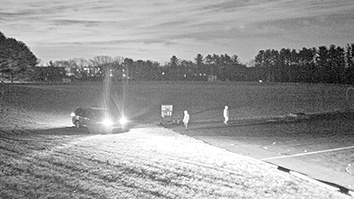Citation
Sidharth Chopra, Amit Galande, A fluoroquinolone-resistant Acinetobacter baumannii without the quinolone resistance-determining region mutations, Journal of Antimicrobial Chemotherapy, Volume 66, Issue 11, November 2011, Pages 2668–2670, https://doi.org/10.1093/jac/dkr364
Introduction
Acinetobacter baumannii is an emerging Gram-negative multidrug-resistant (MDR) nosocomial pathogen responsible for causing lung, bloodstream, urinary tract and skin infections. Additionally, A. baumannii has emerged as a significant threat in injured US military personnel returning for medical treatment from Afghanistan and Iraq.1 Because an increasing number of A. baumannii isolates are resistant to the most commonly clinically utilized antibiotics, it is imperative to understand the development of antibiotic resistance in A. baumannii at the molecular level.2
Fluoroquinolones are broad-spectrum bactericidal agents used to treat diverse bacterial infections. Fluoroquinolones are emerging as viable alternatives for treating A. baumannii infections, but the clinical incidence of fluoroquinolone resistance continues to increase.1,2 The most extensively described mechanism of resistance to fluoroquinolones is mediated by mutations in the quinolone resistance-determining regions (QRDRs) of gyrA that encodes the DNA gyrase A subunit and parC that encodes the topoisomerase IV subunit.3 Additionally, resistance can also be mediated by efflux pumps such as AdeABC and AdeM.3
Recently, plasmid-mediated quinolone resistance (PMQR) genes have been reported in Gram-negative bacteria, including Escherichia coli and Pseudomonas spp., and include the qnr, qep and oqx systems. The qnr system encodes a pentapeptide repeat protein that blocks the action of ciprofloxacin on bacterial DNA gyrase and topoisomerase IV and was first described in Klebsiella pneumoniae. In contrast, the qep and oqx systems encode plasmid-mediated efflux pumps. However, the PMQR genes have not been demonstrated in A. baumannii.3
The prevalent theory is that the fluoroquinolone resistance is chiefly mediated by chromosomal mutation, whereas the acquisition of the PMQR genes results in enhancement of the resistance because the PMQR genes by themselves result in a low level of fluoroquinolone resistance.4
To address the progression of antibiotic resistance in A. baumannii ATCC 17978, we attempted to isolate A. baumannii ATCC 17978 ciprofloxacin-resistant mutants by plating ∼108–109 cfu on Mueller–Hinton agar plates containing 2×–16× the MIC of ciprofloxacin. Among the mutants analysed, we isolated a mutant named AB-7, which exhibited a ciprofloxacin MIC of 16 mg/L (Table 1). The CLSI breakpoints for ciprofloxacin are ≤1 mg/L, susceptible; and ≥4 mg/L, resistant.5 Additionally, the AB-7 strain also exhibited resistance to other fluoroquinolones tested, thus demonstrating class-wide resistance; however, AB-7 was not resistant to the unrelated antibiotic polymyxin B (Table 1). Surprisingly, however, DNA sequencing of the QRDRs did not exhibit any mutations in gyrA, gyrB, parC and parE when compared with the parental strain (Table 1). A. baumannii ATCC 17978 has been whole-genome sequenced and the data have been deposited at the National Center for Biotechnology Information (NCBI; GenBank accession number CP000521.1).6 The DNA sequence was then analysed for existence of the PMQR genes, namely qnr, qep and oqx. None of the PMQR genes was identified, as has been reported by multiple investigators.3,7–9


